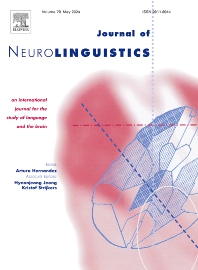Journals in Neuroscience
Elsevier's Neuroscience collection empowers educators, researchers, and students with actionable knowledge to drive collaborative research and advancements in the field. Content covers the nervous system's intricate workings, covering branches like Affective, Behavioral, and Cognitive neuroscience to investigate the neural basis of emotions, behavior, and cognitive functions. Spanning from Molecular and Cellular Neuroscience to Developmental Neuroscience, content provides insights into brain function in health and disease.
- ISSN: 0967-5868
Journal of Clinical Neuroscience

- ISSN: 0021-9924
Journal of Communication Disorders

- ISSN: 1050-6411
Journal of Electromyography and Kinesiology

- ISSN: 0749-596X
Journal of Memory and Language

- ISSN: 0165-5728
Journal of Neuroimmunology

- ISSN: 0911-6044
Journal of Neurolinguistics

- ISSN: 0165-0270
Journal of Neuroscience Methods

- ISSN: 1349-0079
Journal of Oral Biosciences

- ISSN: 0885-3924
Journal of Pain and Symptom Management

- ISSN: 0022-3956
Journal of Psychiatric Research

Related subjects
Behavioral neuroscience
Cognitive neuroscience
Developmental neuroscience and regeneration
Molecular neuroscience
Neural aging
Neuroanatomy
Neurobiology
Neurochemistry
Neuroendocrinology
Neurogenetics
Neuroimmunology
Neurology
Neuropathology
Neuropharmacology
Neurophysiology
Neuroscience general
Neuroscience methodology
Neurotoxicology